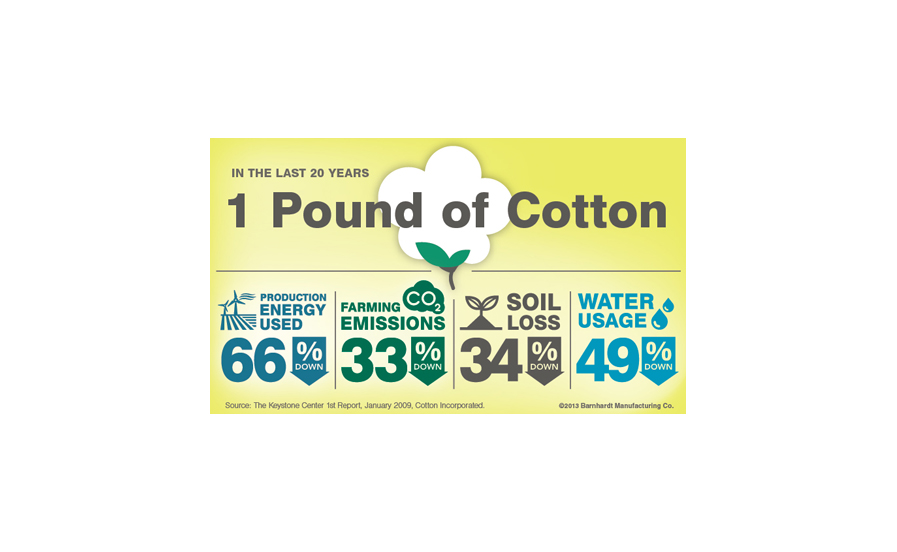There have been claims that growing cotton uses too much water, pesticides, and energy, and that it also takes land away from food crops and reduces air quality. With the advent of modern farming techniques and practices, those myths can be busted. Let’s look at each of them, one by one.
Myth 1: Cotton Reduces Air Quality
Improving air quality is a focus for the U.S. cotton industry. Reduced tillage practices now in place reduce dust emissions from the field. Cotton actually has a small greenhouse gas footprint, and when the carbon stored in the fiber is taken into account, the carbon emitted in cotton’s production footprint is canceled out by what was already present in the fiber. And believe it or not, the amount of carbon dioxide emissions has decreased by 33% in the past 20 years.
Myth 2: Cotton Uses Too Much Energy
Reduced tillage techniques in use now reduce the fuel used on the farm, too. In addition to producing fiber, cotton also produces seed. Close to 700 pounds of seed are produced for every 480-pound bale of fiber. Every acre of cotton grown yields enough seed to produce over 20 gallons of biodiesel. Fewer applications of pesticides also equates to less trips for the tractors, and represents another energy savings. All in all, the total energy in cotton fiber production has been reduced by 66% since the early 1990s.
Myth 3: Cotton Uses Too Much Water
Agriculture accounts for 70% of global water use. But growing cotton (globally) accounts for only 3% of the total agriculture water used. This is in part due to the drought resistance of cotton, as well as the efficient water-management practices adopted by growers. In fact, over the last 20 years U.S. growers have improved the efficiency of irrigated water by about 80%. In the last 20 years the amount of water used to grow cotton in the U.S. has decreased by 49%.
Myth 4: Cotton Uses Too Many Pesticides
It is estimated that each year 40% of the world’s agriculture is lost to pests. That said, the global cotton industry accounts for only 6.4% of pesticide sales. In the U.S., cotton growers make 50% fewer pesticide applications than the last generation of growers. The introduction of new seed varieties is one of the larger reasons for this decline in applications.
Myth 5: Cotton Takes Up Too Much Land and Soil
The amount of land on the Earth suitable for growing crops is 10.3 billion acres—and 36% of the land is already producing crops. But cotton crops occupy only 3% of the world’s agricultural land. Moreover, cotton’s global land usage has declined 30% over the last 30 years.
As far as soil goes, gains in production efficiency using modern technology allow U.S. cotton growers to produce almost two times more cotton per acre now than they did in 1960. Even though the planted acres in the U.S. have declined, the higher yields of the cotton plants have allowed the amount of cotton harvested to increase. In the U.S., cotton growers employ conservation tillage, which is the practice of leaving last year’s crop residue in the field before and after planting the next crop. This helps reduce soil loss, increase water holding capacity, and minimizes runoff. Over the last three decades, soil loss has been reduced by 34%.
Hopefully these explanations and figures allow for a stronger understanding of how bleached cotton is a sustainable fiber. Like with any topic, there are always a ton of myths floating around that aren’t true, or that don’t tell the full story. Now, with this information at hand, it should be much easier to separate some facts from fiction.
To read more about this topic, or check out some of our enlightening infographics, visit our Cotton Sustainability page.
